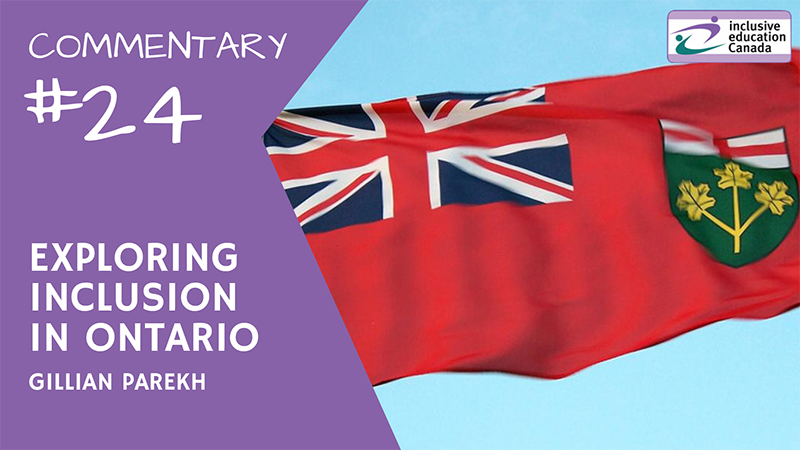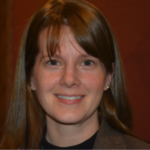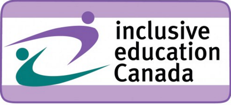 National Inclusive Education Month Commentary #24
National Inclusive Education Month Commentary #24
By Gillian Parekh, Assistant Professor of Education, York University, Toronto
How inclusion is conceptualized in schools is highly variable. Sometimes inclusive education is used to describe hybrid special education models, integrated placements and universal design. More recently, inclusion has been taken up as a process through which traditional schooling practices, particularly those that lead to the exclusion of marginalized groups, are challenged. However, it seems within many academic forums, the discussion on what inclusion means and how it becomes mobilized, often dominate the discussion. While the evidence-based research continues to show the academic and social benefits of inclusive education (Mitchell, 2010; 2014), stakeholders often grapple with its structural implementation and in determining who should be ‘included’ within an inclusion framework. As policy writers struggle to institutionalize an ever-evolving concept, the research demonstrating the disproportionate representation of racial and class minorities placed in special education (de Valenzuela, 2006; Connor, 2017), the consequent barriers of limited post-secondary education (PSE) access for students in special education. (Parekh, Brown & Conley, 2016), and queries regarding the construction of disability itself (Reid & Knight, 2006) continue to mount. In spite of all the research claiming otherwise, it’s important to interrogate how systems come to believe that students are still better served in a special education environment.
The province of Ontario has approached inclusion from a variety of positions. Frequently, provincial policy papers incorporate the terms ‘inclusion’ and ‘equity’, situating both as key strategic goals for improving the academic experiences and outcomes for Ontario students. The frequency in which they are cited together suggests that equity and inclusion are somehow interdependent and can only be realized when working in tandem. In 2009, the Ontario Ministry of Education released ‘Ontario’s Equity and Inclusive Education Strategy’. In this document, the Ministry opted to discuss equity and inclusion through the lens of acknowledging and appreciating diversity, focusing on pedagogical praxis and attitudinal barriers. However, the document largely avoided discussion on structural issues related to programming and marginalization based on perceptions of ability. Later in 2017, the Ministry released ‘Ontario’s Education Equity Action Plan’. Although the term ‘inclusive’ did not appear in the title, ‘inclusion’ and ‘inclusive’ are mentioned collectively over 50 times throughout the document. This time, the Ministry identified structural barriers that disproportionately impact students identified with disabilities or special education needs. For example, the Ministry acknowledged how non-academic programming in high school, while once thought to be offered as an accommodation, was now demonstrating to be a significant barrier to post-secondary access. While the systemic barriers to post-secondary access were acknowledged in relation to secondary pathways, the document did not address how special education programming can function as its own streaming system across the elementary panel, presenting similar barriers to PSE access.
Disability studies scholars approach inclusion from a variety of perspectives as well. Many conceive inclusive education as a “means to provide students with educational access and opportunities to participate in society” (Artiles, Kozleski, & Waitoller, 2011, 9), where the focus looks at ways to improve the conditions of students in schools through praxis, the advancement and enactment of rights, and the reform of educational structures. Additionally, inclusion is often taken up through querying the ways in which disability is constructed to justify school exclusion (Brantlinger, 2006), interrogating systemic practices that limit opportunities for people perceived as disabled (Ben Moshe, Chapman, & Carey, 2014), and the ways inclusion can function as a site for political resistance and radical change (Greenstein, 2015).
Inclusion encompasses each of these aspects and demands that, when reviewing educational policies and practices, educators and policy writers consider two key questions: 1) Who benefits? (Brantlinger, 2006), and 2) Inclusion into what? (Greenstein, 2015). When it comes to organizing students into programs, educators must reflect on who is benefitting from such organizational decisions and who is losing out. Additionally, when practices shift towards inclusion, it is critical to actively explore into what are we including students. How do we ensure the environment, curriculum, and climate are ones in which students can experience a sense of belonging, a sense of membership and shared power? (Parekh, 2014). In examining the cultural, attitudinal and structural composition of schools, inclusion is a call for reform, demanding the cultural, material and structural conditions of schools be assessed and addressed. With its radical potentiality, inclusion challenges the very ways in which schooling practices produce disablement and exacerbate inequality. However, even when well-intentioned, inclusion cannot happen in isolation. The transformation of schools requires system change at all levels of policy, practice, and administration. It is only through our collective commitment that these ideals can be realized.
References:
Artiles, A. J., Kozleski, E. B., Waitoller, F. (2011), Inclusive education: Examining equity on five continents. Cambridge, MA: Harvard Education Press
Ben-Moshe, L., Chapman, C. & Carey, A. C., (2014) Disability Incarcerated: Imprisonment and Disability in the United States and Canada, Palgrave MacMillan
Brantlinger, E. (Ed). (2006) Who benefits from special education? Remediating (Fixing) Other People’s Children, Lawrence Erlbaum Associates
Connor, D. J., (2017). Who is Responsible for the Racialized Practices Evident within (Special) Education and What Can Be Done to Change Them?, Theory Into Practice, 56(3), 226-233
de Valenzuela, J. S., Copeland, S., Qi, C. H., & Park, M. (2006). Examining educational equity: Revisiting the disproportionate representation of minority students in special education. Exceptional Children, 72(4), 425–441
Greenstein, A. (2015). Radical Inclusive Education, Taylor and Francis
Parekh, G. (2014). Social citizenship and disability: Identity, belonging, and the structural organization of education. PhD Thesis. York University: Toronto
Parekh, G., Brown, R. S., & Conley, C. (2016) Institutional racism and classism enacted through Special Education programming: An exploratory study of the Toronto District School Board’s Home School Program. Presented at the Toronto District School Board’s Structured Pathways Conference, Toronto
Mitchell, D. (2010). Education that fits: Review of international trends in the education of students with special educational needs. Christchurch, New Zealand: University of Canterbury. (URL. http://www.educationcounts.govt.nz/__data/assets/pdf_file/0016/86011/Mitchell-Review-Final.pdf)
Mitchell, D. (2014). What Really Works in Special and Inclusive Education: Using Evidence-Based Teaching Strategies. Routledge.
Reid, D. K. & Knight, M. G. (2006) Disability Justifies Exclusion of Minority Students: A Critical History Grounded in Disability Studies, Educational Researcher, 35(6), 18-23
 Gillian Parekh is an Assistant Professor of Education at York University in Toronto. Previous to her appointment to York University, she held a Postdoctoral Fellowship with the Centre for Urban Schooling at OISE/University of Toronto and was a research coordinator with the Toronto District School Board. Gillian is member of IEC’s Network of Associates.
Gillian Parekh is an Assistant Professor of Education at York University in Toronto. Previous to her appointment to York University, she held a Postdoctoral Fellowship with the Centre for Urban Schooling at OISE/University of Toronto and was a research coordinator with the Toronto District School Board. Gillian is member of IEC’s Network of Associates.
